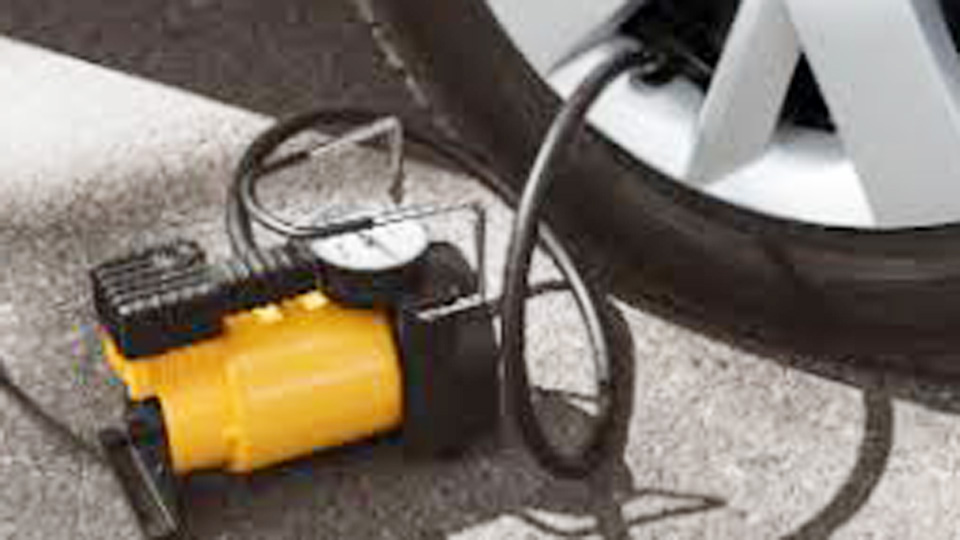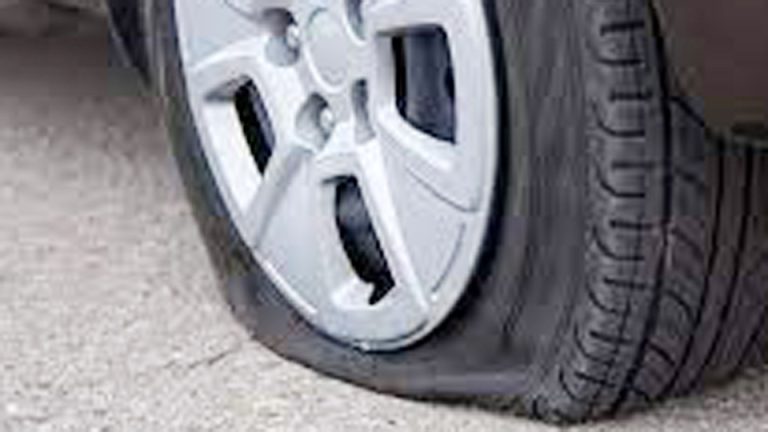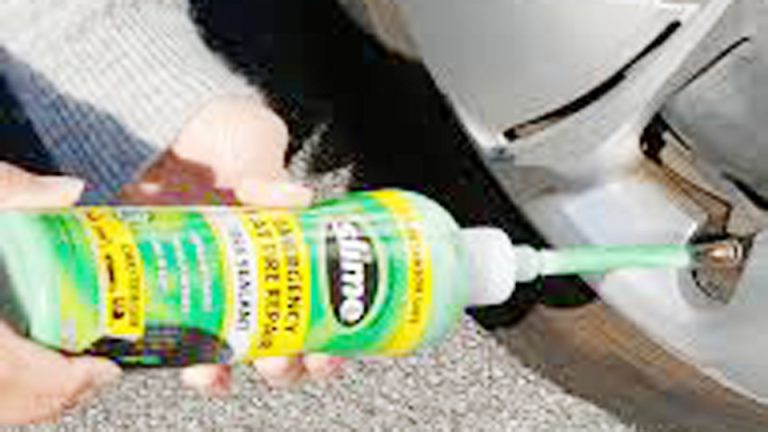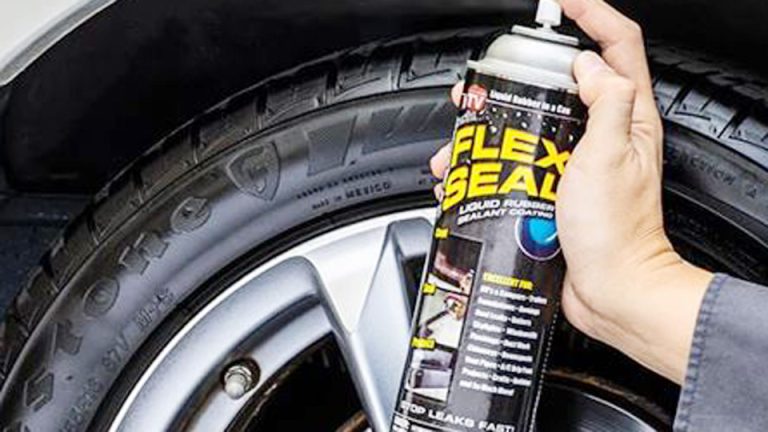I can’t count how many times a driver has rolled into my garage with that worried look—you know, the one you get when something feels “off” with the car. Maybe it’s the thumping of worn brake pads, a steering wheel that fights you, or just the dreaded low-tire-pressure light glowing on the dash. One of the most common questions I hear in those moments is: “Does car need to be running to use tire inflator?” It sounds simple, but it’s a detail that can make a big difference.
Tires are your only contact with the road, and keeping them inflated properly isn’t just about comfort—it’s about safety, fuel efficiency, and saving money on replacements. I’ve seen plenty of folks burn out their inflator or drain their battery just because they didn’t know the right way to power it.

Image by tameson
What Is a Tire Inflator and How Does It Work?
A tire inflator, often called a portable air compressor or air pump for tires, is basically a compact device that pumps air into your tires to reach the recommended PSI. It’s not some fancy gadget; it’s practical toolkit essential that every car owner should have in their trunk.
In simple terms, it works by drawing power—either from your car’s 12V outlet, a battery, or sometimes even a wall plug—and compressing air through a hose to your tire valve. The motor inside spins to build pressure, and most models have a gauge to show you when you’ve hit the sweet spot.
From my experience fixing flats in the shop, these things come in handy for everything from topping off after a slow leak to fully inflating a spare. They’re especially useful for off-roaders or folks with trailers, where tire pressure adjustments are frequent.
Why does this matter for safety? Low tire pressure reduces traction, especially in wet conditions, leading to hydroplaning. I’ve seen customers come in after near-misses because they ignored that TPMS light—tire pressure monitoring system—and a quick inflate could’ve prevented it.
On the performance side, proper inflation ensures even contact with the road, improving braking and cornering. Cost-wise, it saves on premature tire replacements, which can run $100–$200 per tire in the US. Reliability is key; a failing inflator leaves you vulnerable. And for fuel efficiency, the EPA notes that every 1 PSI drop below recommended can cost 0.2% in gas mileage.
Does Your Car Need to Be Running to Use a Tire Inflator?
This is the big one that sparks debates in auto forums and my garage chats. No, your car doesn’t always need to be running to use a tire inflator, but it often helps, depending on the model.
Most common tire inflators plug into the 12V accessory socket—think cigarette lighter port. In many vehicles, like Chevys or Toyotas, this port only powers up when the ignition is in the “accessory” or “on” position. So, you might need to turn the key without starting the engine. But if your battery is weak, running the car ensures steady power and avoids draining it.
Battery-powered inflators, like some from Ryobi or Milwaukee, don’t require the car at all. They’re cordless, great for remote spots, but they need charging via USB or a wall outlet.
Then there are AC-powered ones that plug into a household outlet—no car involvement needed, ideal for garage use.
I remember a time I was helping a buddy with his Jeep Wrangler on a trail. His plug-in inflator wouldn’t work because the battery was low, and we had to jump-start the engine first. Lesson learned: always check your inflator type before heading out.
For safety, if you’re roadside, running the car might be necessary for power, but park safely and use hazards. Performance-wise, it doesn’t affect the inflation itself. Cost? Battery models are pricier upfront but save on not idling the engine. Reliability varies—plug-ins are sturdy but dependent on your car’s electrical system.
Types of Tire Inflators Available in the US Market
In the States, you’ve got plenty of options, from budget buys at Walmart to pro-grade at AutoZone.
Portable 12V inflators are the go-to for most drivers. Brands like Viair or Slime dominate, compatible with sedans like Honda Civics or trucks like Ram 1500s.
Cordless battery ones from Dewalt or Craftsman are rising in popularity for their convenience, especially for RVs or ATVs.
Stationary compressors, like those from California Air Tools, are for home garages but not truly portable.
Common problems? Overheating motors in cheap models, leading to shutdowns mid-use. Signs of failure include weak airflow, noisy operation, or inaccurate gauges.
I’ve compared them hands-on: A Viair 88P once saved me on a long drive, inflating a tire in under 5 minutes, while a no-name brand fizzled out after one use.
When replacement is needed: If it can’t reach 30–40 PSI consistently, or leaks air, it’s time. OEM options from car makers like Ford are vehicle-specific but pricey. Aftermarket? More affordable, with warranties from reputable brands.
| Feature | OEM Tire Inflators | Aftermarket Tire Inflators |
|---|---|---|
| Price Range (USD) | $50–$150 | $20–$100 |
| Compatibility | Tailored to specific models (e.g., GM vehicles) | Universal, fits most US cars like Fords, Chevys |
| Durability | High, factory-tested | Varies; brands like EPAuto are reliable, generics fail fast |
| Warranty | Often 1–2 years through dealer | 1 year typical, some like Kensun offer lifetime |
| Availability | Dealerships or online (Amazon for OEM parts) | Auto parts stores, online retailers |
Pros of OEM: Perfect fit, no compatibility issues. Cons: Higher cost, limited features.
Aftermarket pros: Cheaper, more features like digital gauges. Cons: Quality inconsistency; I’ve seen fakes that overheat and damage valves.
Common Problems with Tire Inflators and Signs of Failure
Tire inflators aren’t invincible. Common issues include clogged hoses from debris, worn-out seals causing leaks, or electrical faults in the power cord.
Signs? If it’s taking forever to inflate—say, over 10 minutes for a standard car tire—something’s wrong. Unusual vibrations or burning smells mean the motor’s shot.
In my workshop, I’ve diagnosed plenty where the gauge reads wrong, leading to overinflation and tire damage. Why replace? Safety first— a faulty inflator could burst a tire or leave you stranded.
OEM vs aftermarket: OEMs rarely fail early, but aftermarket ones from brands like AstroAI hold up if you avoid knockoffs.
Installation isn’t needed per se, but setup tips: Always uncoil the hose fully to avoid kinks. Maintenance? Clean the intake filter monthly. Common mistake: Using on hot tires without cooling them, which skews pressure readings.
Once, a customer brought in a shredded tire because his inflator’s bad gauge overpumped it to 50 PSI instead of 32. We fixed it, but it was a pricey lesson.
When and Why You Need to Replace Your Tire Inflator
Replacement timing depends on usage. Daily drivers might need a new one every 3–5 years; occasional users, longer.
Why? Wear and tear reduces efficiency, impacting safety by not inflating properly during emergencies.
Signs: Inconsistent pressure, frequent overheating, or physical damage like cracked casings.
For US vehicles, check compatibility—some inflators max at 100 PSI, fine for cars but not trucks needing 80+.
OEM replacements from dealers ensure fit, but aftermarket from Harbor Freight can save bucks if you pick trusted ones.
Tips: Test it quarterly on your tires. Common mistake: Ignoring storage—keep it dry to prevent rust.
I swapped out my old Slime inflator after it failed during a family road trip. Grabbed a Viair, and it’s been bulletproof since.
OEM vs Aftermarket Tire Inflators: Making the Right Choice
Diving deeper, OEM means original equipment manufacturer—parts from the car’s maker, like Toyota’s own inflator kit.
They excel in reliability, matching your vehicle’s specs perfectly. But they’re costlier and harder to find outside dealerships.
Aftermarket? Third-party brands offer variety. In the US, options like TireTek or Bon Aire are widely available at Pep Boys.
Pros of aftermarket: Innovative features like auto-shutoff, lower prices. Cons: Potential fit issues or shorter lifespan.
I’ve used both; OEM on a client’s BMW for precision, aftermarket on my daily driver for affordability.
Table for brands:
| Brand | Type | Price (USD) | Pros | Cons |
|---|---|---|---|---|
| Viair | 12V Portable | $60–$80 | Fast inflation, durable | Noisy |
| Slime | 12V with Sealant | $30–$50 | Fixes punctures too | Messy if overused |
| Dewalt | Cordless | $100–$150 | No cords, versatile | Battery drains quick |
| OEM (e.g., Ford) | Vehicle-Specific | $80–$120 | Seamless integration | Limited availability |
Choose based on needs: Daily use? Go durable aftermarket. Luxury car? Stick OEM.
How to Choose the Right Tire Inflator for Your Vehicle
Compatibility is key. For compact cars like Honda Accords, a basic 12V does fine. Trucks? Need higher PSI capacity, like 150+ for heavy-duty.
US market faves: EPAuto for budgets, Kensun for features like LED lights.
Consider duty cycle—how long it runs without overheating. Cheap ones conk out after 10 minutes.
Personal insight: I tested a bunch on a Chevy Silverado; the Viair handled four tires no sweat, while a generic overheated on the second.
Genuine vs fake: Look for holograms or serial numbers. Fakes often have poor build quality, like thin hoses that kink.
Buy from reputable spots like Amazon or O’Reilly Auto Parts to avoid counterfeits.
Step-by-Step Guide to Using a Tire Inflator Safely
First, check your tire’s recommended PSI—usually on the door jamb sticker.
Park on level ground, engine off unless needed for power.
Unscrew the valve cap, attach the hose securely—twist till snug.
Plug in or power on, set the desired PSI if digital.
Start inflating; monitor the gauge. Stop at target, detach quickly to avoid air loss.
For running the car: If 12V, turn to accessory mode. If battery low, start it to alternate power.
Safety: Wear gloves, eye protection. Don’t overinflate—爆 risk.
Common mistake: Inflating while driving; always stop.
I once guided a newbie through this on a rainy night; we got his flat fixed in 15 minutes, no issues.
Installation Tips, Maintenance, and Common Mistakes
Tire inflators don’t “install” like brakes, but setup matters. Store coiled neatly in trunk.
Maintenance: Wipe down after use, check cords for frays. Lubricate moving parts if manual says so.
Mistakes: Using on damaged valves—replace those first. Or ignoring max pressure, risking blowouts.
Anecdote: In the shop, a guy fried his inflator by running it too long on a semi-truck tire. We laughed, but he learned to match tool to job.
Tools needed: Basic? Just the inflator. Advanced? Pressure gauge for verification, extension cord for AC models.
Safety: Never leave unattended; overheating can cause fires. Use in well-ventilated areas.
Spotting Genuine vs Fake Tire Inflators in the US
Fakes flood online markets. Genuine ones have quality packaging, clear branding.
Check for UL certification—US safety standard. Fakes often misspell brand names or have flimsy buttons.
I’ve spotted knockoffs at flea markets; they look similar but fail fast.
Buy from authorized sellers: For Viair, their site or trusted retailers.
Pro tip: Scan QR codes if available; genuines link to official pages.
Tools You’ll Need and Best Practices for Safety
Essentials: Tire pressure gauge (digital for accuracy), flashlight for night use, gloves.
For maintenance: Compressed air to clean, multimeter to check electrical.
Best practices: Test monthly, store cool and dry. In workshops, I always calibrate gauges against a master one.
Safety first: Chock wheels if on incline, avoid loose clothing near moving parts.
Once, a loose hose whipped back and nicked my hand—gloves saved the day.
Conclusion
Wrapping this up, tire inflators are more than a convenience—they’re a smart investment in your vehicle’s safety, performance, and longevity. By choosing the right one, whether OEM for precision or aftermarket for value, you can avoid costly repairs and stay confident on the road. Remember, regular checks and proper use go a long way.
My final pro tip: Always carry a backup manual pump in your kit; tech fails, but old-school reliability doesn’t. Make informed buys by testing in-store if possible, and you’ll thank yourself next time you’re dealing with a low tire.
FAQ
What PSI Should I Inflate My Car Tires To?
It varies by vehicle—check the sticker inside your driver’s door or owner’s manual. Most passenger cars run 30–35 PSI cold. I’ve adjusted hundreds; overdoing it makes rides harsh, underinflating wears edges.
Can a Tire Inflator Fix a Flat Tire?
Temporarily, yes, if it’s a slow leak. Models with sealant like Slime can plug small punctures. But for big holes, it’s a band-aid—get to a shop. I once used one to limp a customer’s SUV 20 miles home.
How Long Does It Take to Inflate a Tire with a Portable Inflator?
Typically 3–7 minutes for a standard car tire from flat to full, depending on size and model power. Trucks take longer. In my tests on a Dodge Ram, a good 12V unit did it in 5 minutes flat.
Are Cordless Tire Inflators Worth the Extra Cost?
Absolutely for versatility—no relying on car power. Brands like Milwaukee shine for off-grid use. But if you’re mostly roadside, a 12V is cheaper and sufficient. I’ve switched to cordless for my trail rig and never looked back.
What’s the Best Way to Store a Tire Inflator?
Keep it in a dry, cool spot like your trunk organizer. Coil hoses loosely to prevent cracks. Clean after each use. In humid areas like the South, I’ve seen rust ruin good units—bag it with silica packs.



